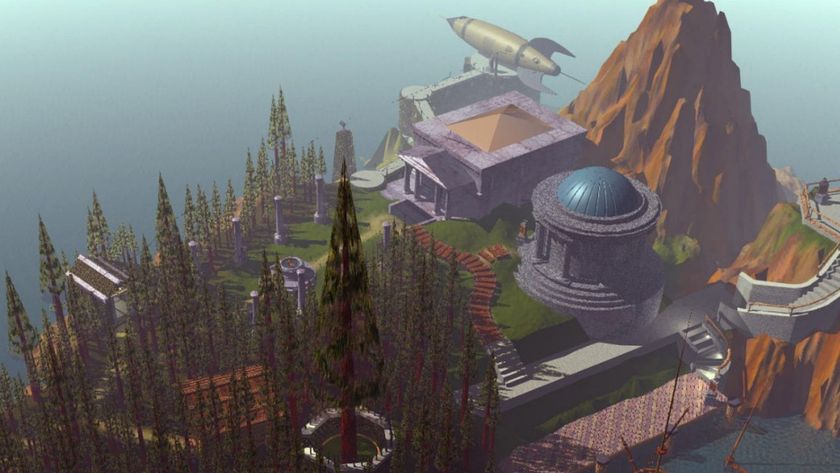Ridge Racer 3D hands-on preview
It's 3D! Threeeee Deeeee!
Namco made a very interesting point at Wednesday's Ignite media event: the Ridge Racer franchise has been there day and date with almost every console and handheld launch since the series moved from the arcade to home consoles. That's... impressive, if not downright admirable, but it makes sense given that the series had long-established itself as an arcade racing staple years ago.
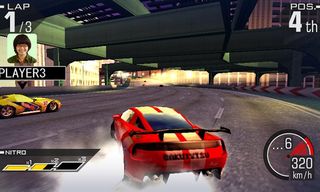
But racing games are no longer the stuff of twitchy reverse-360s around corners and powerslides through brightly-lit tunnels. Things have expanded - dramatically - in recent years to cover the tuning craze, even expanding into open world territory. The question remains, then: can a simple circuit-based racer with familiar tracks and cars hang with the newcomers, even if said newcomers can't boast being in 3D on a brand-new portable?
With that in mind, we tore around a few of Ridge Racer 3D's tracks in an effort to see how Namco's launch-day fare would hold up. Though the game was seemingly in an all but finished state, the Career Mode hadn't yet been fully opened, but we were able to delve into two different tiers of races with over a half-dozen different tracks, all while sampling what has now become a standard part of the series' garage: varyingly grippy rides that zip around hardware-pushing locales.

By and large, there were no real surprises; this is Ridge Racer, just as it has grown into after a few HD console releases. This means the ability to stock multiple stages of boost by power-sliding around corners, but we didn't see some of the more varied ways to unleash that boost. Instead, the game relegates things to a fairly simple two-button system. L kicks off one filled tank of speed juice, R will burn two and pressing both L and R together will sap all three tanks - should you be patient enough to actually stockpile that much, of course.
We, sadly, were never that patient, instead trying desperately to catch up to the leader of the pack while sending our slick little ride sideways around as many corners to fill the tanks as possible. Again, though, this is Ridge Racer, and it meant careful control of the car when entering those turns; throwing the car sideways at high speed would suck down plenty of boost, but it could potentially slow down the car if done on the wrong corner, which in turn would sort of defeat the whole purpose of the doriftu style in the first place.
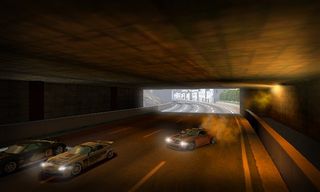
After a few races, though, we started fumbling with the 3DS' depth slider, eventually realizing that it was best left as an all or nothing effect, and realizing that Namco had opted for a fairly reserved approach. Sure, there was the odd instance of sparks leaping out from the undercarriage and flying "out" of the screen, but what we were a little surprised by was how the depth didn't really translate to a sense of where the other cars were on the track, leading to a few rear-end shunts from time to time. It was hardly a game-breaker, of course, but it's clear the emphasis here was on subtle layers of depth rather than some kind of track that stretched off into infinity.
The game did run quite well, though, with just the odd moment of framerate hitchiness that quickly returned the game to its silky normal speed. The car models were nicely detailed, offering just a bit of customization to their paint jobs, and of course the environments were typical Ridge Racer fare: bright, cheery, nicely varied, and littered with hairpins, slight grades and tight corners alike. It felt... good, like settling into an old chair that's perhaps just a bit long in the tooth, but cradles you in a way that only something properly worn-in can do.
Sign up to the 12DOVE Newsletter
Weekly digests, tales from the communities you love, and more
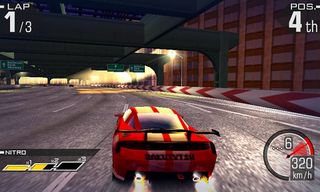
There was one interesting addition that we discovered late into our play session. While the pre-race options were pretty standard stuff; automatic/manual transmission, different colors, different cars with their own handling, and so on, there was also the option to literally buy a jump start off the line, either in simple auto-rocket start form or by pre-filling the boost tanks. There was also the option to have an over-limit speed boost kick in from the rocket-start should you feel like spending some hard-earned credits before entering the race. It's an interesting risk/reward setup that we're curious about exploring when we give the game a full review.
Finally, there was something of a finesse option for those that balk at the idea of being able to drift simply by letting off the gas for a half-second: manual drift. By holding the A Button, we could initiate a drift at any time, and it then became the speed and angle entering the corner that determined how severe the pitch was. The analog stick controlled the severity of the drift, of course, but this was clearly meant to be an advanced move where smaller turns could be milked for just a bit more oomph. This is in addition to the different types of handling and grip, mind you, so it does seem Namco is attempting a decent amount of depth for a simple portable racer.
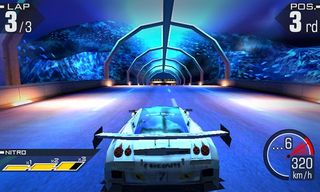
We'll have a chance to dig deeper into the full game experience soon, and once we have, a review will be waiting for you. Yes, you!
Feb 4, 2011
